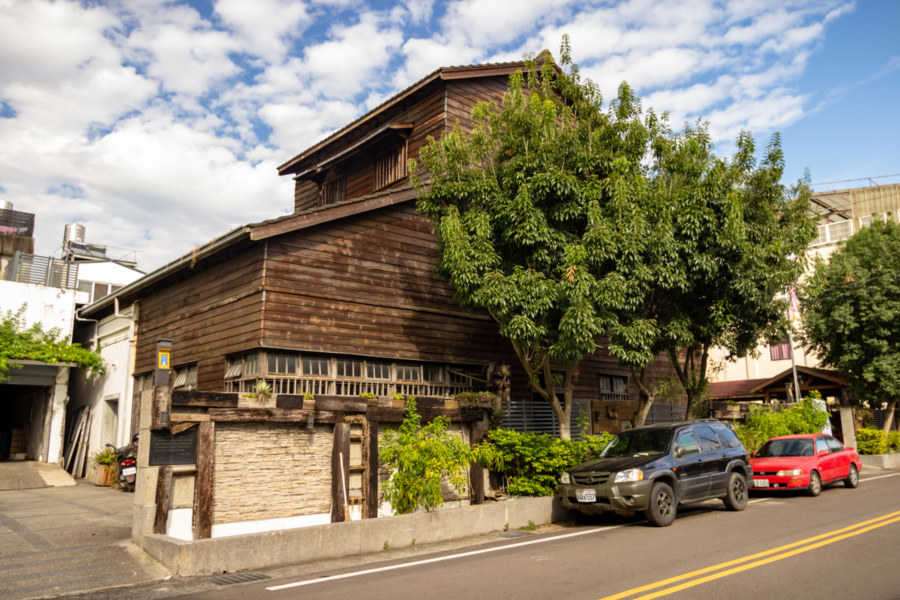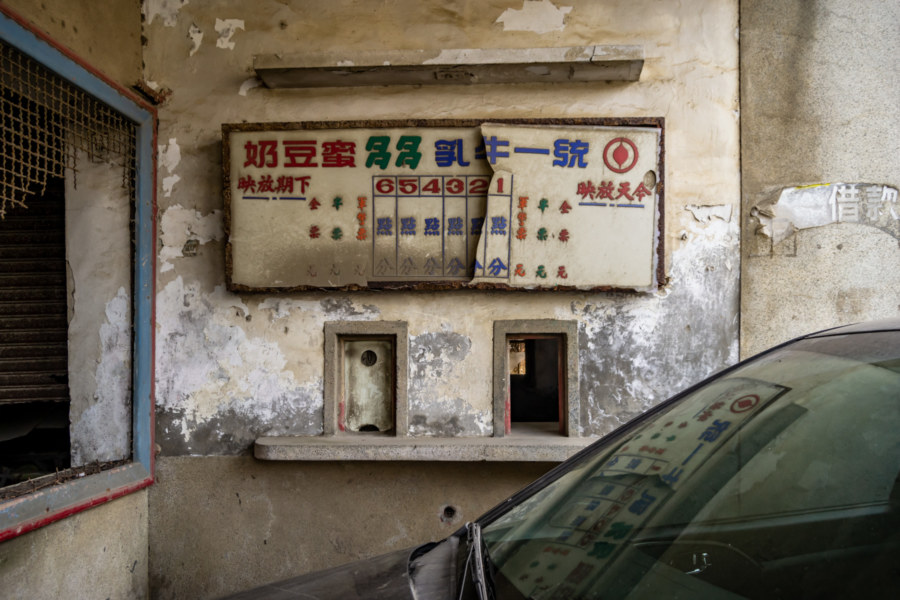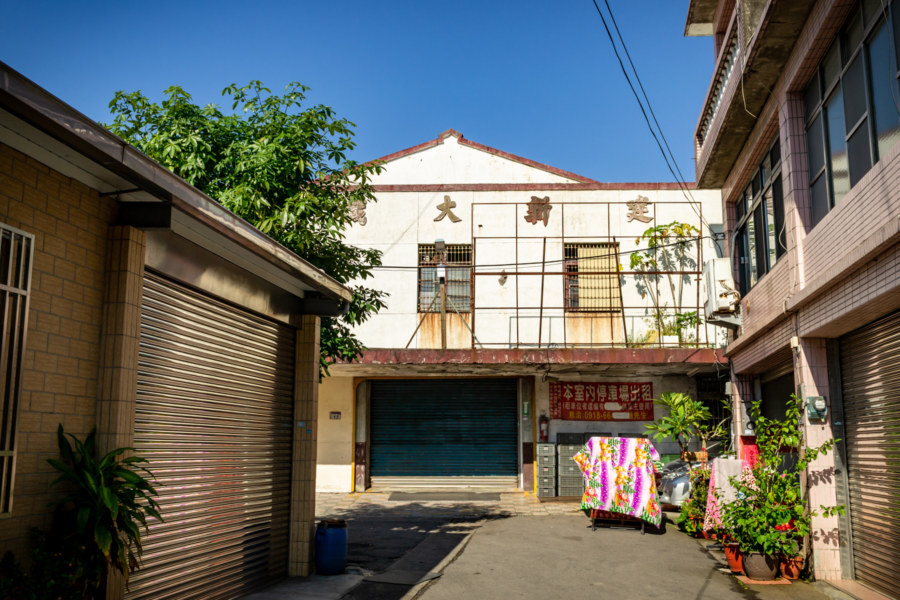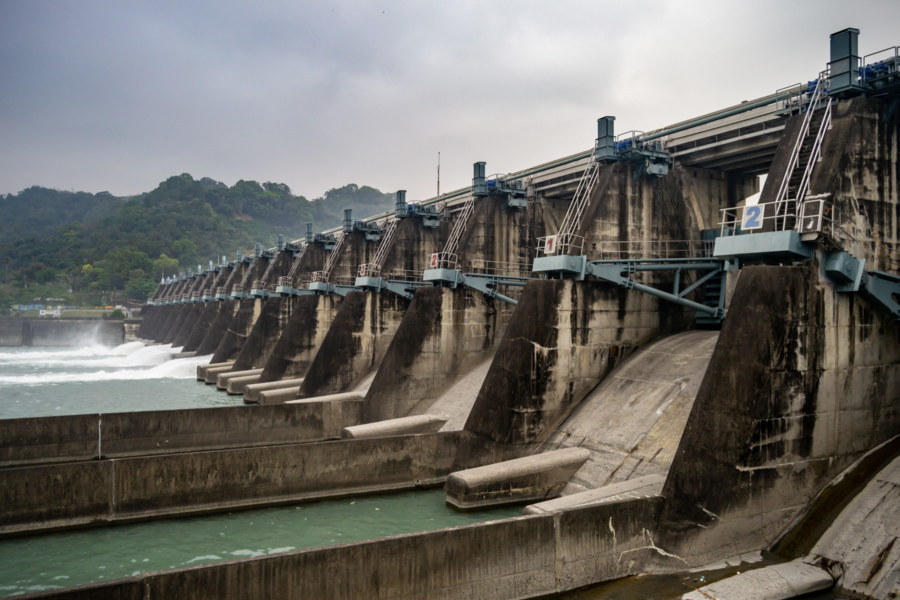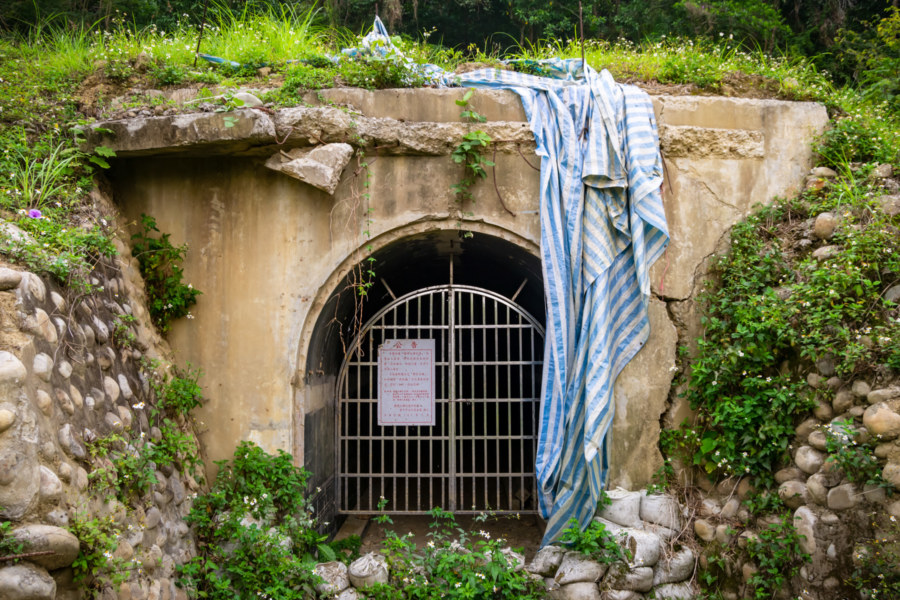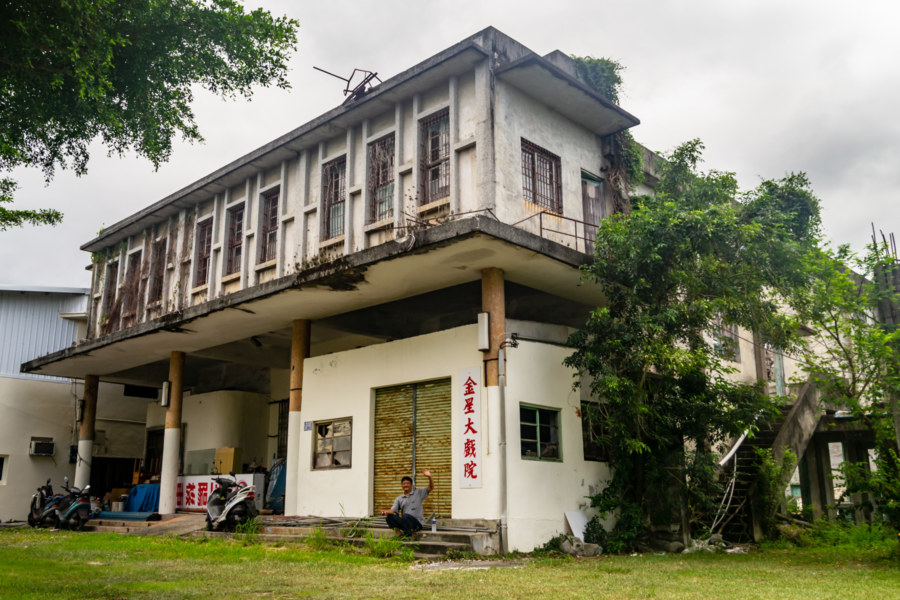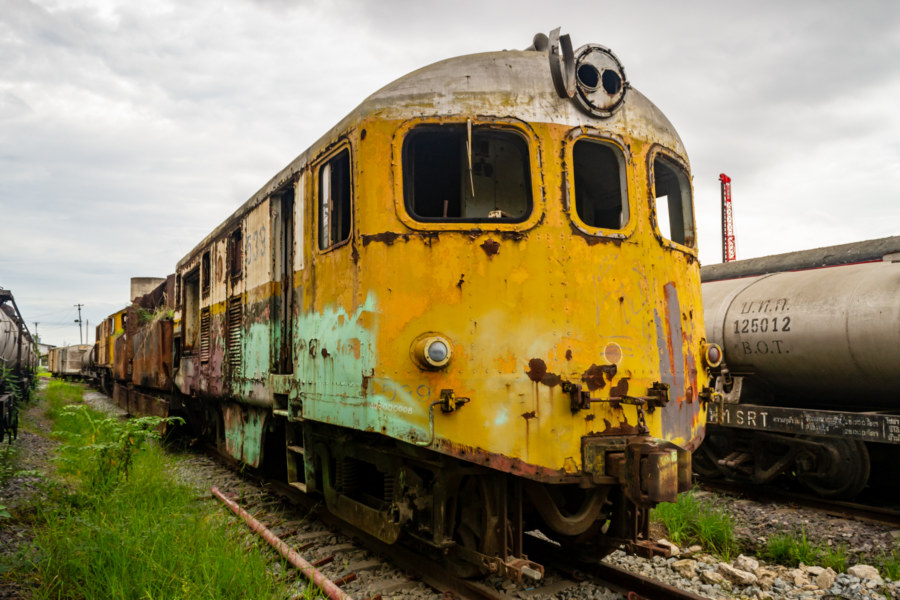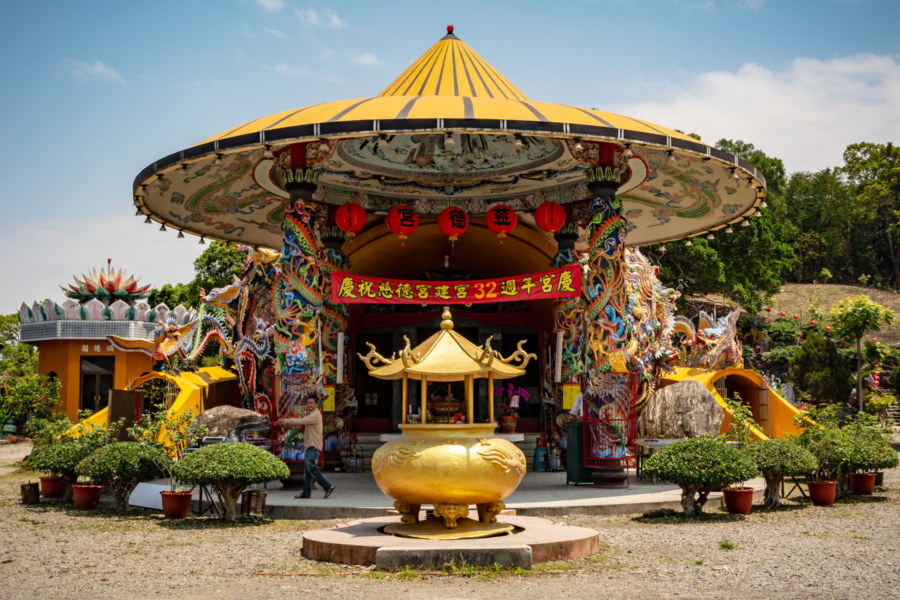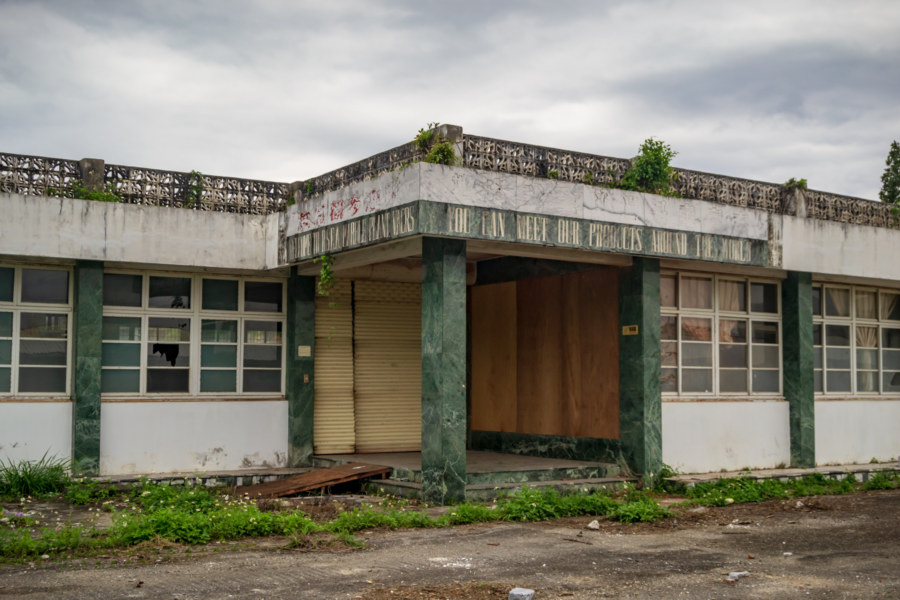Shigang Rice Barn 石岡穀倉, formally known as the Shigang Farmers’ Association Rice Milling Barn 石岡農會碾米穀倉, is one of the best preserved Japanese colonial era rice barns in Taiwan. Constructed with locally-sourced timber in 1941, it was designed to be earthquake-resistant, benefitting from hard lessons learned from the 1923 Great Kantō Earthquake and the 1935 Hsinchu-Taichung Earthquake. It was in use for many decades before modernization of rice milling made it obsolete, presumably sometime in the 1980s or 1990s, leaving the building derelict and threatened with demolition.
This category mainly features location-specific content about individual points of interest. These might be historic sites, tourist attractions, abandoned places, or something else constrained by geography.
Mailiao Jincheng Theater 麥寮金城戲院
Jīnchéng Theater 金城戲院 is located in Mailiao, a rural township in northwestern Yunlin, Taiwan. This theater is something of a cypher; it was reputedly built in 1965, but may have only opened in 1968, and business records record only one transaction in 1975. It probably closed in the late 1980s or very early 1990s, a casualty of changing consumer habits and population outflow to larger urban centers. Beyond that, not much is known about this hulking monster of a theater, which may have accommodated something like 800 patrons at its peak.
Daxi Jianxin Theater 大溪建新大戲院
Jiànxīn Theater (建新大戲院) is located in Yuánshùlín (員樹林), a suburban area on the western outskirts of Daxi in Taoyuan, Taiwan. Business records indicate an inception date of 1977, but not much is known about this theater apart from that. The last recorded transaction in 2000 sets an upper bound on when it was operating, but likely went out of business in the early 1990s, when most of the rest of Taiwan’s cinema industry collapsed. It now enjoys a second life as a parking garage for the nearby factories and residences.
Shigang Dam 石岡水壩
Shigang Dam 石岡水壩 is a barrage dam on the lower reaches of the Dàjiǎ River 大甲溪 in Shigang, Taichung, Taiwan. It was constructed between 1974 and 1977, not long after the completion of the Techi Dam 德基水壩, a far more ambitious hydroelectric project further upstream. Intended mainly for flood control and irrigation purposes, it was heavily damaged in the devastating 921 Earthquake of 1999 and later repaired. Despite its diminished capacity, Shigang Dam continues to serve an important function in regional water distribution across Taichung.
Yuli Shinto Shrine 玉里神社
Yuli Shinto Shrine 玉里神社 is a Japanese colonial era historic site in Yuli, the largest town in the middle of the Huādōng Valley 花東縱谷 of eastern Taiwan. Formally known as Yuli Shrine 玉里社 (Tamasato-sha in the original Japanese), it was constructed in 1928, the third year of the Shōwa era. The vast majority of Taiwan’s several hundred Shinto shrines were destroyed in the decades following the Japanese withdrawal—but enough of this shrine remained to justify its official designation as a cultural asset in 2008. Since then some effort has been undertaken to restore the site, which occupies a hilltop at the western edge of town, and it now ranks among the most well-preserved in the remote eastern part of the country.
Beigou Forbidden City Vault 北溝故宮文物典藏山洞
Beigou Forbidden City 北溝故宮 is an obscure historic site hidden in the hills of Wufeng, Taichung. From 1949 to 1965 it was the provisional base of operations for the team of archivists, curators, scholars, and technicians overseeing the subset of the Palace Museum collection sent for safekeeping to Taiwan by the Kuomintang (KMT) in the later stages of the Chinese Civil War. Nowadays this collection is managed and displayed by the National Palace Museum 國立故宮博物院 (or simply Gùgōng 故宮 for short), situated in Taipei, and almost nothing remains of the facilities in Wufeng. The one exception is an underground vault constructed in 1953.
Jinxing Theater 金星大戲院
Jīnxīng Theater 金星大戲院 is located in the small town of Zhīběn 知本 on the southern outskirts of Taitung City, Taitung, in southeastern Taiwan. Zhiben is home to the Katipul group 卡地布部落 of the Puyuma people 卑南族, one of Taiwan’s recognized Indigenous groups, but this theater was constructed in 1967 to cater to the many KMT veterans who settled here after the completion of the Central Cross-Island Highway 中部橫貫公路. Named after Venus (literally “Golden Star” in Chinese), it went out of business shortly after it was sold to a lumber company in 1980 and has been abandoned ever since.
Bang Sue Railway Cemetery
Bang Sue Railway Cemetery is located deep within a vast tract of land on the northwest side of Bangkok owned by the State Railway of Thailand. This land is home to Phahonyothin freight yard, the largest in Thailand, as well as numerous maintenance depots, engine shops, and other railway facilities. It is also the future site of Bang Sue Grand Station, set to be the largest railway station in Southeast Asia when construction is completed in the coming years. For decades the train cemetery hidden within these grounds has been known to urban explorers, so I decided to swing by and take a look while visiting in 2019.
Caotun Cide Temple 草屯慈德宮
Cídé Temple 慈德宮 (also romanized as Tzude Temple) is an unusual manifestation of Taiwanese folk religion situated on a hillside overlooking the historic town of Caotun in northwestern Nantou, Taiwan. Constructed in 1984, it was inspired by the recurring dreams of a local fruit farmer, Zhāng Wénqǐ (張文杞), and funded by generous donations from the community. The main hall of the temple takes the form of a bottle gourd (葫蘆) laying on its side, and the entrance is covered by a conical bamboo farmer’s hat (斗笠). These features give the temple its peculiar shape, but they were not chosen at random; the design is inspired by ancient Chinese mythology, albeit with an idiosyncratic twist.
RSEA Marble Factory 榮民大理石工廠
I chanced upon the ruins of the RSEA Marble Factory (榮民大理石工廠) while riding around the industrial park on the north side of Hualien City sometime in early 2017. It wasn’t immediately obvious what this derelict factory produced so I decided to stop and take a closer look. Although much of this sprawling site had already been cleared, a few half-demolished buildings remained. In one of these I found a pallet full of product samples and several references to marble, answering the first of many questions on my mind. But there’s always more to examine if you’re curious, so let’s dig into the archives and see what can be learned about this abandoned industrial site in Hualien, Taiwan.
